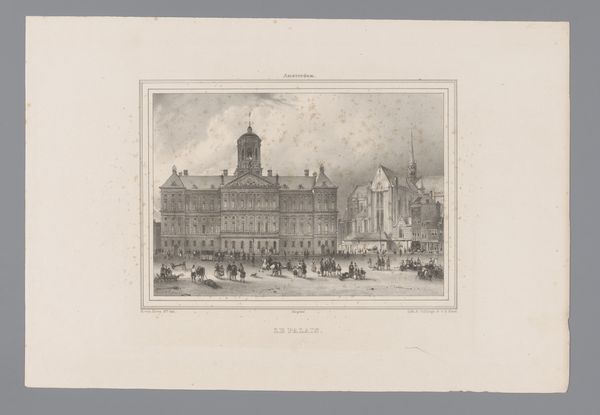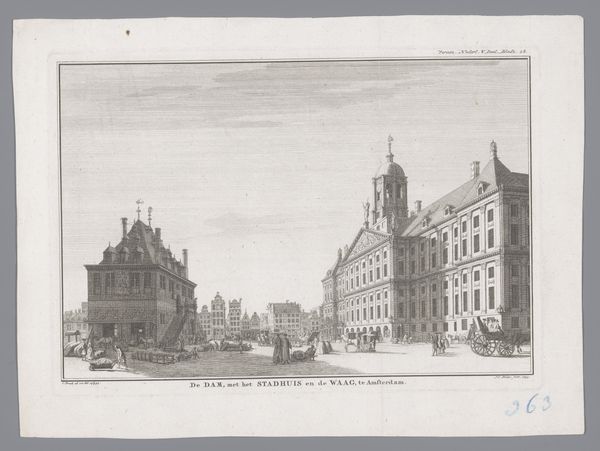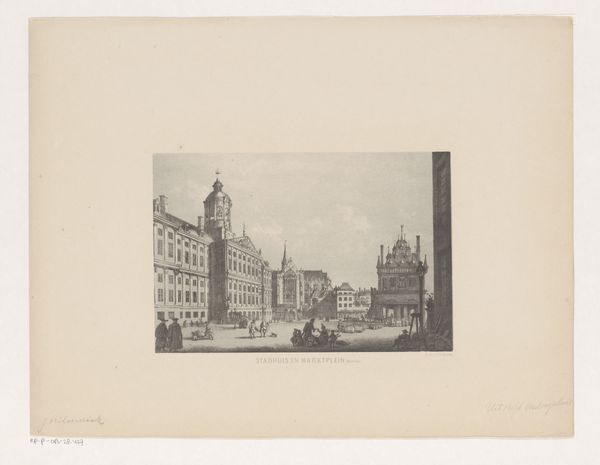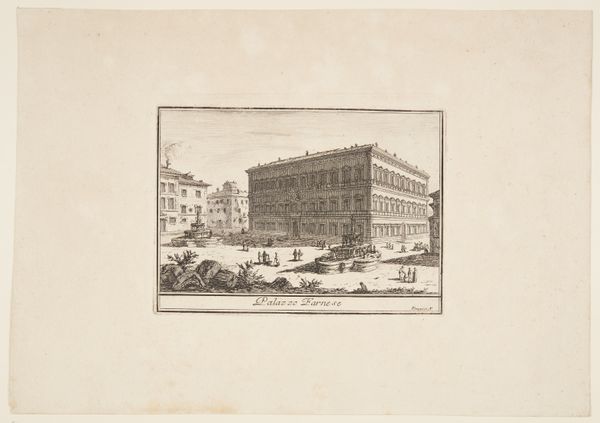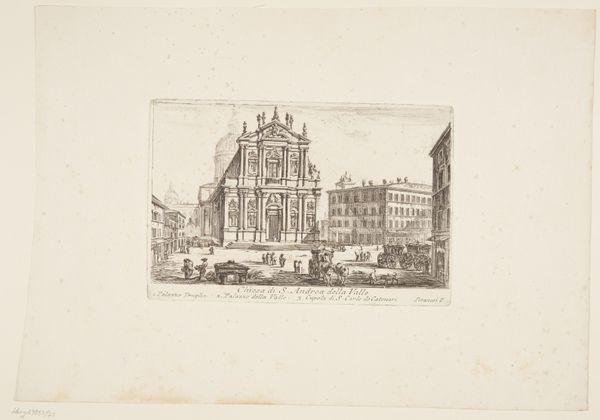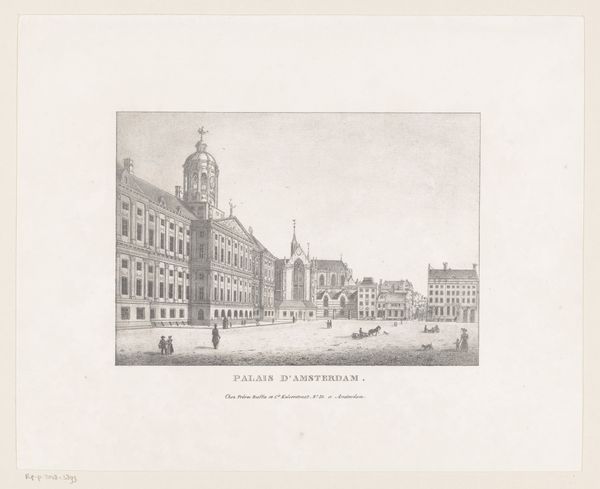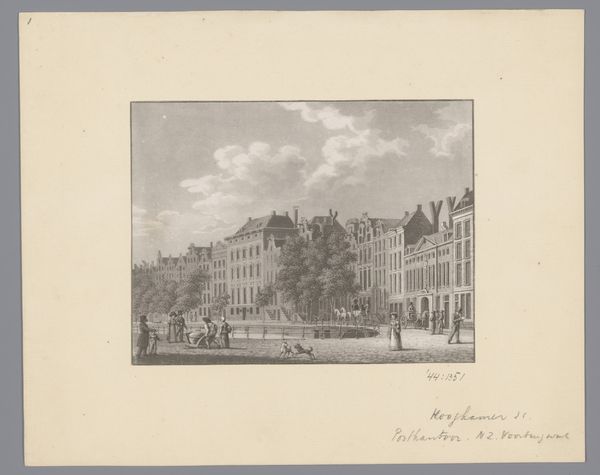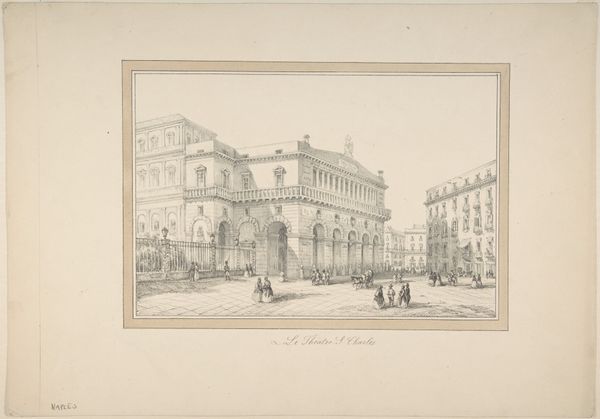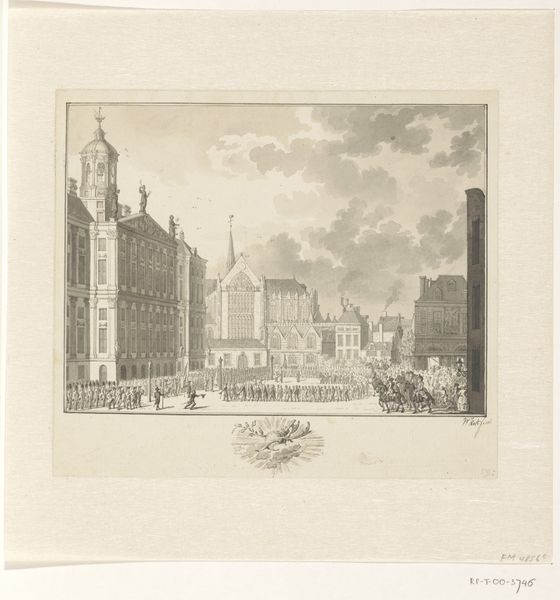
Gezicht op de Waag en het Stadhuis op de Dam te Amsterdam 1743 - 1744
0:00
0:00
watercolor
#
dutch-golden-age
#
watercolor
#
cityscape
#
watercolour illustration
#
genre-painting
#
watercolor
Dimensions: height 165 mm, width 239 mm, height 184 mm, width 255 mm
Copyright: Rijks Museum: Open Domain
Curator: This watercolor by Jan Caspar Philips, dating from 1743-1744, depicts "Gezicht op de Waag en het Stadhuis op de Dam te Amsterdam," or a view of the Weigh House and the Town Hall on Dam Square in Amsterdam. Editor: The colours feel muted, almost nostalgic. The composition divides the square in two: a flurry of market activity near the Weigh House contrasted by the stoic symmetry of the Town Hall. Curator: Philips was meticulous. Notice how the rendering captures both the architectural precision of those buildings, and also the texture of daily life. Consider the materials—watercolor would have offered a specific lightness of touch for this genre scene. Editor: The Town Hall really dominates. I find the architectural symbolism striking: that ordered facade speaks volumes about the Republic’s self-image. What’s the visual impact of situating this orderly government structure alongside what appears to be a bustling market? Curator: Well, the location is everything! Dam Square served as a civic stage, but it was also the center of trade and public life. Consider that the Weigh House represented commercial regulation; it literally ensured fair measures and accurate levies. Editor: I’m interested in the tiny figures. What does their attire suggest? It’s fascinating how Philips subtly uses costume to represent distinct social strata within this busy, developing trade metropolis. Curator: Precisely! And the mode of transport is equally important here. How did this watercolour relate to contemporary printed images that may have depicted Amsterdam’s progress for an expanding urban audience? Editor: Yes, thinking about prints opens interesting ideas about access and distribution. To conclude, this scene provides potent symbols about order, structure, and regulation set against a background of industrious chaos. Curator: A powerful point. It leaves me reflecting on how material processes were perceived in tandem with the more established visual symbols. Thank you.
Comments
No comments
Be the first to comment and join the conversation on the ultimate creative platform.
